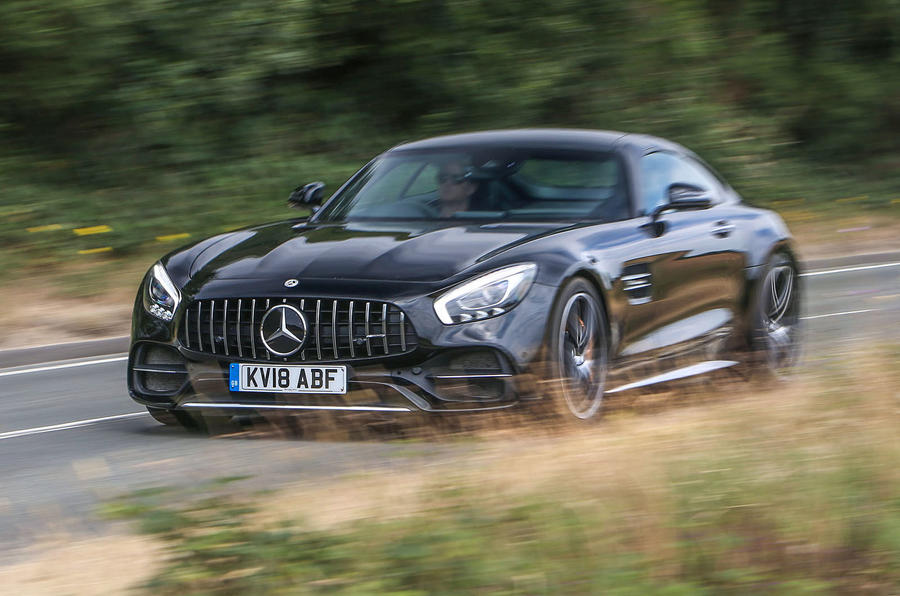What is it?
If you’ve been holding on for just the right kind of Mercedes-AMG GT, this might be your moment.
The GT C, driven here in the UK for the first time, slots into the range between the GT S and track-day-ready GT R. It adopts the active rear steering and electronically controlled locking differential of the latter but goes without the unyielding racing buckets, mad diffuser or rear wing (you get a dinky retractable spoiler instead).
Not that there isn’t drama here. You can most easily identify a C by the extraordinary breadth of its aluminium rear bodywork, which is 57mm wider than that of the standard car, and 305-section Michelin Pilot Supersport tyres. Meanwhile, the car’s maw gets the chrome braces of Mercedes’ ‘Panamericana’ grille, now found across the range. All in, AMG’s more affordable follow-up to the SLS still looks sensationally purposeful.
So purposeful, in fact, that you might wonder what might be required to loosen the vast rear contact patch. The answer is the same dry-sumped, twin-turbocharged 4.0-litre V8 found elsewhere in the range; for the C, it develops 550bhp, bridging the gap between GT S and GT R and outgunning Porsche ’s 911 Turbo.







































Join the debate
Add your comment
All bonnet and no trousers
Reminds me of the "shitting dog" Chrysler Crossfire. Mercedes can't seem to come up with cars which look the part against the 911, R8 et cetera. The SLS was even worse, yet the cheaper SLC is a reasonably attractive effort, so they can do better if they put their minds to it.
Batmobile!!!
Would be interesting to see
Would be interesting to see this tested against the Vantage... unless Mercedes have a ‘no compete’ clause in their deal with Aston Martin!
Yes Indeed